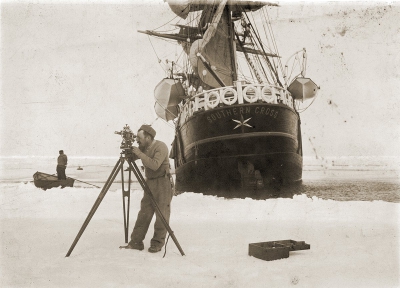The Heroic Age of Antarctic Exploration was an era in the exploration of the continent of Antarctica which began at the end of the 19th century, and ended after the First World War; the ShackletonRowett Expedition of 19211922 is often cited by historians as the dividing line between the "Heroic" and "Mechanical" ages.During the Heroic Age, the Antarctic region became the focus of international efforts that resulted in intensive scientific and geographical exploration by 17 major Antarctic expeditions launched from ten countries. The common factor in these expeditions was the limited nature of the resources available to them before advances in transport and communication technologies revolutionized the work of exploration. Each of these expeditions therefore became a feat of endurance that tested, and sometimes exceeded, the physical and mental limits of its personnel. The "heroic" label, bestowed later, recognized the adversities which had to be overcome by these pioneers, some of whom did not survive the experience: a total of 19 expedition members died during this period.
Both the geographic and magnetic South Poles were reached for the first time during the Heroic Age. The achievement of being first to the geographical pole was the primary object in many expeditions, as well as the sole rationale for Roald Amundsen's venture, which became the first to reach it in 1911. Other expeditions aimed for different objectives in different areas of the continent. As a result of all this activity, much of the continent's coastline was discovered and mapped, and significant areas of its interior were explored. The expeditions also generated large quantities of scientific data across a wide range of disciplines, the examination and analysis of which would keep the world's scientific communities busy for decades.
The Southern Cross Expedition, otherwise known as the British Antarctic Expedition, 1898–1900, was the first British venture of the Heroic Age of Antarctic Exploration, and the forerunner of the more celebrated journeys of Robert Falcon Scott and Ernest Shackleton. The brainchild of the Anglo-Norwegian explorer Carsten Borchgrevink, it was the first expedition to over-winter on the Antarctic mainland, the first to visit the Great Ice Barrier—later known as the Ross Ice Shelf—since Sir James Clark Ross's groundbreaking expedition of 1839 to 1843, and the first to effect a landing on the Barrier's surface. It also pioneered the use of dogs and sledges in Antarctic travel.
The expedition was privately financed by the British magazine publisher Sir George Newnes. Borchgrevink's party sailed in the Southern Cross, and spent the southern winter of 1899 at Cape Adare, the northwest extremity of the Ross Sea coastline. Here they carried out an extensive programme of scientific observations, although opportunities for inland exploration were restricted by the mountainous and glaciated terrain surrounding the base. In January 1900, the party left Cape Adare in Southern Cross to explore the Ross Sea, following the route taken by Ross 60 years earlier. They reached the Great Ice Barrier, where a team of three made the first sledge journey on the Barrier surface, during which a new Farthest South record latitude was established at 78° 50′S.
On its return to England the expedition was coolly received by London's geographical establishment exemplified by the Royal Geographical Society, which resented the pre-emption of the pioneering Antarctic role they envisaged for the Discovery Expedition. There were also questions about Borchgrevink's leadership qualities, and criticism of the limited extent of scientific results. Thus, despite the number of significant "firsts", Borchgrevink was never accorded the heroic status of Scott or Shackleton, and his expedition was soon forgotten in the dramas which surrounded these and other Heroic Age explorers. However, Roald Amundsen, conqueror of the South Pole in 1911, acknowledged that Borchgrevink's expedition had removed the greatest obstacles to Antarctic travel, and had opened the way for all the expeditions that followed.

1898Aug, 23
The Southern Cross Expedition, the first British venture of the Heroic Age of Antarctic Exploration, departs from London.
Choose Another Date
Events on 1898
- 20Apr
Spanish-American War
President William McKinley signed a joint resolution to Congress for declaration of War against Spain, beginning the Spanish-American War. - 10Jun
United States Marine Corps
Spanish-American War: U.S. Marines land on the island of Cuba. - 3Jul
Battle of Santiago de Cuba
A Spanish squadron, led by Pascual Cervera y Topete, is defeated by an American squadron under William T. Sampson in the Battle of Santiago de Cuba. - 23Aug
Heroic Age of Antarctic Exploration
The Southern Cross Expedition, the first British venture of the Heroic Age of Antarctic Exploration, departs from London. - 13Sep
Photographic film
Hannibal Goodwin patents celluloid photographic film.

 English
English  español
español  français
français  português
português  русский
русский  العربية
العربية  简体中文
简体中文 